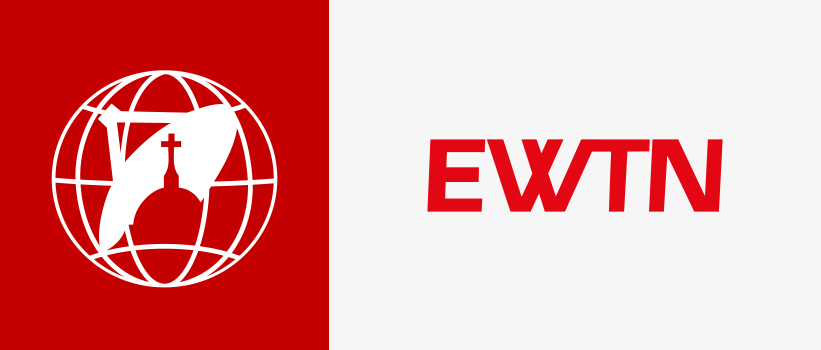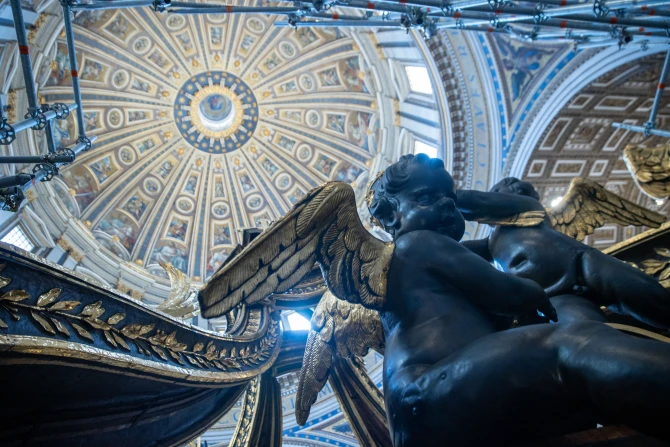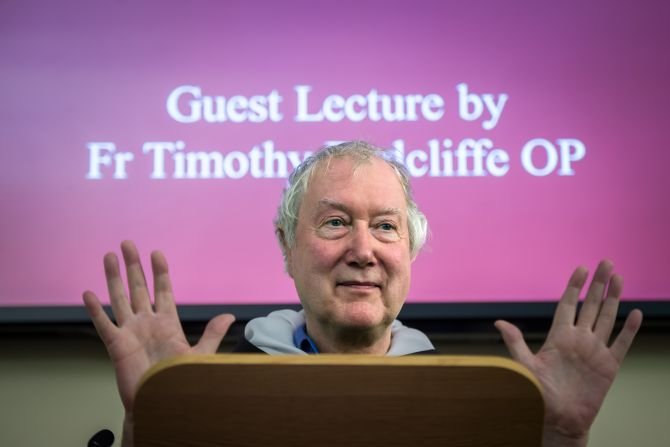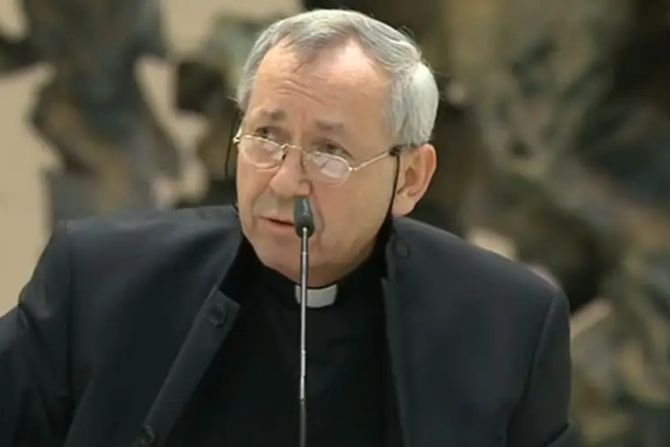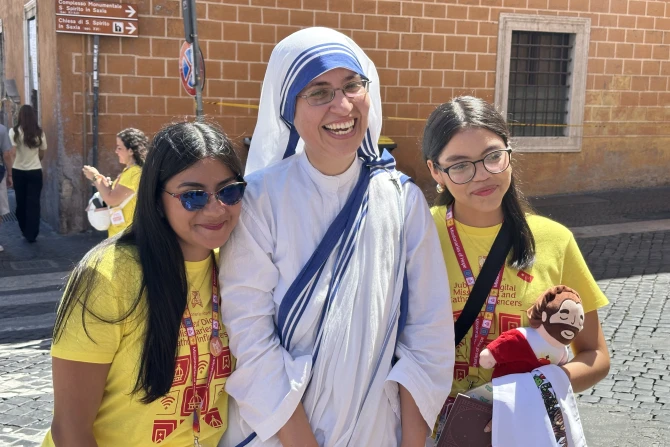In an interview with Colm Flynn, EWTN News Rome Correspondent, Dr. Barbara Jatta, the director of the Vatican Museums, shared her experience and insight into her role overseeing more than 200,000 pieces and seven miles of corridors and hallways. She expressed her gratitude for her position, which she has held since January 2017, and reflected on her appointment as the first woman to hold this position a decade ago. Jatta also discussed the increasing opportunities for women in the Vatican and noted that Pope Francis has been instrumental in driving this change. The Director of the Vatican Museums also shared her thoughts on how the Vatican decides what to display to the public from its vast collection.
Dr. Barbara Jatta, it is a pleasure to meet you. And thank you for doing this interview.
My pleasure.
Now, in the Vatican Museums, you have over 200,000 pieces and seven miles of corridors and hallways. What is it like to oversee all of this?
I feel blessed. I feel blessed and privileged. It’s almost seven years that I’ve been here. I was the deputy director under the former director, Antonio Paolucci, for six months. And then, in January 2017, I was appointed director. And really, it’s a blessing and a privilege every day that I enter this wonderful place.
I know you don’t want to talk about this, but ten years ago, Pope Francis appointed his director. And it made headlines here because you were the first woman to hold the role. How did you feel about that? And how do you still think about it today?
In the beginning, everybody was emphasizing this aspect, and I was minimizing it because I thought it was… Of course, I always felt insecure and did not expect to be in this specific role. I worked for 20 years in the Vatican Library as an art historian, but I never expected to be appointed. So, it was something that really arrived at me unexpectedly. But, then, I minimized, in some ways, the role of my gender, thinking that maybe it was an internal choice, an internal art historian that knew the Vatican society. And in the meantime, of course, I felt privileged about this appointment. And then, little by little, I will tell you when and why I changed my mind. And I emphasize and understand the importance of my role [as the first woman to be appointed]. Once after two years, I was in Mexico City. I was lecturing at the university Catholic University of Mexico City. And after the conference, two girls came to me, two students came to me, and they said to me: “I want to shake your hands; I want to know you because, for us, you are an example. You are a mother, a woman, a wife, but you also follow your passion, and you have a top role in probably the best Museum in the world, and you arrived there.” And there I said, “Oh, I can be an example for young students for young girls.” And so that’s how I realized the importance of my appointment and the incredible choice that Pope Francis made for me.
So how it can inspire other young women around the world.
Exactly.
Because many people will say that the Vatican is a man’s club rather than a place for women in leadership, do you find that that is changing? Under Pope Francis, has the Vatican become a place that is more open for women in leadership positions?
One hundred percent, yes! When, 27 or 28 years ago, I was appointed… The Vatican Library hired me; I was the third woman to work in the Vatican Library. And when I left the Vatican Library 20 years later, half of the staff were already women, but not in the highest positions. Since my appointment, women have reached the highest positions even in the library, the Vatican Library, other Vatican dicasteries, and Vatican institutions. But not the most elevated positions because of their career but because they have responsibilities. And I was now with our General Secretary of the Governorate of the Vatican City State, and she’s a nun and a woman. She’s younger than me. She’s ten years younger than me. And she’s fantastic. And she’s awesome: Sr. Raffaella Petrini and she’s incredible. And she was appointed two years ago.
So, you see things changing?
Absolutely.
When Pope Francis appointed you, did he say anything special to you, specifically about why you were chosen?
No, not really. Not really. When I saw him recently, a year ago with my reappointment – because I was reappointed for another term – he said to me: “Women are more organized.” And he mentioned something about the genius of ladies. And I found it very pleasant because he said it so marvelously that I will never forget it.
I know that for International Women’s Day 2023, the Pope said something – and I’m paraphrasing – women use not only their hands for their minds as well.
Exactly. But I think also men use the same. So, I’m a feminist but not against men, of course.
You mentioned there are just over 200,000 pieces in the Vatican Museums, but only a percentage is on display. A lot of the collection is hidden or left in storage. How do you decide what is displayed to the public?
Of course, if we look at the percentage of what is on display and what is in the deposit, it is impressive. Specific collections have only 1% on display and 99% in [storage]. Other collections, like the antique Greek and Roman collections, have more because they are more historical museums. In the hall where we are, you can see excellent statues that, of course, are so important and of such a size, [these] kinds of sculptures are even difficult to keep in deposits. For some historical [displays], of course, we keep the show the same in terms of museography. Other collections, such as contemporary art or painting, are more movable because they are a work-in-progress display and Museum. And that’s why we like to show: they’re so large, and the collection and the storage, the percentage is 25 to 75 [percent]: 25 is on display and 75 is in storage. We tend to rotate some collections to show them better.
One of the significant challenges for you, Dr. Barbara, is that you not only have to preserve and maintain the incredible knowledge, but you also must display it and share it with the world. Is that a tricky balancing act to try to do the two at the same time, simultaneously?
No, I don’t think so. It’s part of our mission. A mission to preserve means restoration and maintenance in a broad sense. So, all the preservations in terms of repair, but also in terms of care, in a general sense, it’s part of our mission, but also DNA. So, it’s part of our conception. And it has been that same mission since the inception of collections in the papacy and then in the Vatican City State. Suppose you see all the laws and juridical statements that the Pope made during the century on the preservation and maintenance of art objects from Raphael every 50 years. In that case, you have a Pope or a juridical statement to testify about this aspect. And we were then sharing. Sharing is the other immense component of our mission. Communicating means sharing in many ways: how we welcome our visitors… You have seen today: we are in March, and March is the start of an incredible season for our visitors, but the season of January and February or November is nowadays a high season. And thanks to God, we are nearly back to what was pre-pandemic.
7 million visitors.
Yes.
What do you project [the numbers will be] for 2023?
Difficult to say. But we closed 2019 with almost 7 million visitors, and the numbers of these last two months were much more than in January and February of 2019. So, we’ll see.
It was a devastating blow for the Museum to be closed for that period. I don’t just mean financially because the money is also vital for the restoration work. But to have it closed to the public for so long, was that difficult?
It was a challenging moment for everyone, worldwide. So, it was difficult; it was scary. Italy was the first country after China [that] was taken, and so we were scared. We didn’t know that this enemy was coming from the East and arriving in Italy and Milan – thank God not to Rome in the first months of the pandemic. And so, we were watching people in Milan dying on the TV, which was terrifying. And the fact that it was closed and to reorganize a life of almost 1000 people from one day to the other stayed home. And today was the first day because we closed on the 9th of March. So, the 10th of March was the first day we were closed. I must tell you, we were coming here – only a few of us: myself, the Secretary, and a few guards – we were checking in the locked down time, all around the seven miles of the Museum. How can you close, as a department, a museum like this one? And so, the check was made daily by a few guards going around at lunchtime. It was like a ghost city: empty. You didn’t see anybody else around. And even though this Museum is magic, it was even a bit scary, so open, and so quiet. Something that you would never have imagined in your wildest dreams when you took the job… Yes. And then, little by little, when we reopened in June, we were coming in at two different times of the day, [so as] not to be all together because there were issues that you could not have so many people at the same time in the same place.
And even the financial loss of having the museums closed. I remember hearing you say once that even the cost of dusting: something simple like wiping the dust off the statues and the artifacts costs over 300,000 euros per year.
In a different way from other museums worldwide, from national museums like the Louvre or the British Museum, we live off our ticketing; the state does not support us. Of course, we contribute to the life of the Vatican City State, and we are part of the governorate of the Vatican City State. So, we are supporting our income. And you can believe when the income immediately [disappears], and we were going back and forth between the lockdown and the reopening. It was a tough time because the issue was that Pope Francis told us to pay the salary to all the families.
So, no money is coming in, but the money’s still going out.
Exactly. So, I remember after almost a year of opening and closing, opening and closing… and of course, when we were open, there were no tourists or very few Roman tourists or Lazio tourists because of the problem of regions. So you could not move from one region to another. And so, it was not very easy. And after a year, we started to be really scared. People around were talking about selling our objects to survive.
People were saying that over 100 million in losses, or 200 million or something like that. They were saying what are they going to do to make it up again? Are we going to sell the art? Unbelievable!
But a miracle arrives. And little by little we started again. And today’s numbers are very satisfying. And we were talking before about sharing: sharing is not only about the reception of 1000s of visitors every day, but sharing is also through the internet. We improved our website, of course, it was a good website, but we improved it a lot during the pandemic time. You can now have, of course, virtual tours of many of our galleries. But also have a specific catalog of all our displayed objects so that you can study each statue deeply. So, you can prepare for your visit or go deeper into the knowledge of the objects afterward. And then all that was done with the social networks to share our patrimony. A lot of things were done.
Let me also ask you about Vatican diplomacy because this is a fascinating part of the Vatican Museums that most people need to learn about. And that is the items archives within the Vatican Museums have been used to build relations between the Holy See, the Vatican, and other nations around the world in groups. As I know, pieces for the Vatican Museums have been sent, for example, to China. And last year, I saw them in the United Arab Emirates at the Vatican Expo. What kind of results do you get from that, using pieces from the Museum to build relations?
Of course, we are a global museum in a way that’s very different from international museums. However, we have a relationship with all the major museums and even the little museums worldwide. And so, we have exchanged for exhibitions, or we organize exhibitions in many other cities and museums. You mentioned China, but on many different occasions: I said that I was for a collection in Mexico City, in College in Colegio de San Ildefonso, or in Chile, or in Europe or in the eastern part, or in North America. And, of course, many other occasions. And in this, we are also very much supported by our group of philanthropists and friends that are the patrons of the arts in the Vatican Museums, that are keeping us not only for… our restorations but also, they support the sharing of the artifacts. So, they help us to organize exhibitions, and we will soon organize more collections, thanks to them.
The Vatican sees this as a way of teaching people and communicating with people of different races and nations about the tradition and beauty of the Catholic faith, so where the spoken word has fallen, where diplomacy is not working too well, at least a connection to be made through art and the beauty of it.
Bella! “Via pulchritudinis” is a language that everybody can understand. Beauty is not related to any gender but to all genders, to all the people with a soul who can understand. Everybody can understand beauty.
Pope Benedict XVI said that the saints and art are the most excellent apologetics regarding our faith and how they can show and display how to live.
St. Paul VI said a wonderful thing: the artists are prophets and poets. Prophets because they see things before others, and poets because they essentially see things. So even a little object, even a little sign can distill the sense and the concept. And so, prophet and poet. And that is a significant heritage that we have, thanks to him.
Finally, Dr. Barbara Jatta, seven years you’ve been here at the Vatican Museums through incredible times. What are you looking forward to in the future?
We are expecting the grand Jubilee of 2025. So, we are already working on that. We are expecting more and more visitors, more and more pilgrims that we would like to welcome well, not only by having more and more galleries open to them but also by thinking of how we can communicate and share this incredible patrimony that is not only a patrimony of art, not only a patrimony of history but is also firmly a patrimony of faith. And so, it’s exactly what we would like to do, from today, and the past, and into the future
From today and well into the future. Dr. Barbara Jatta, thank you very much.
Thank you.
Sign Up Here: https://mailchi.mp/ewtn/vatican
